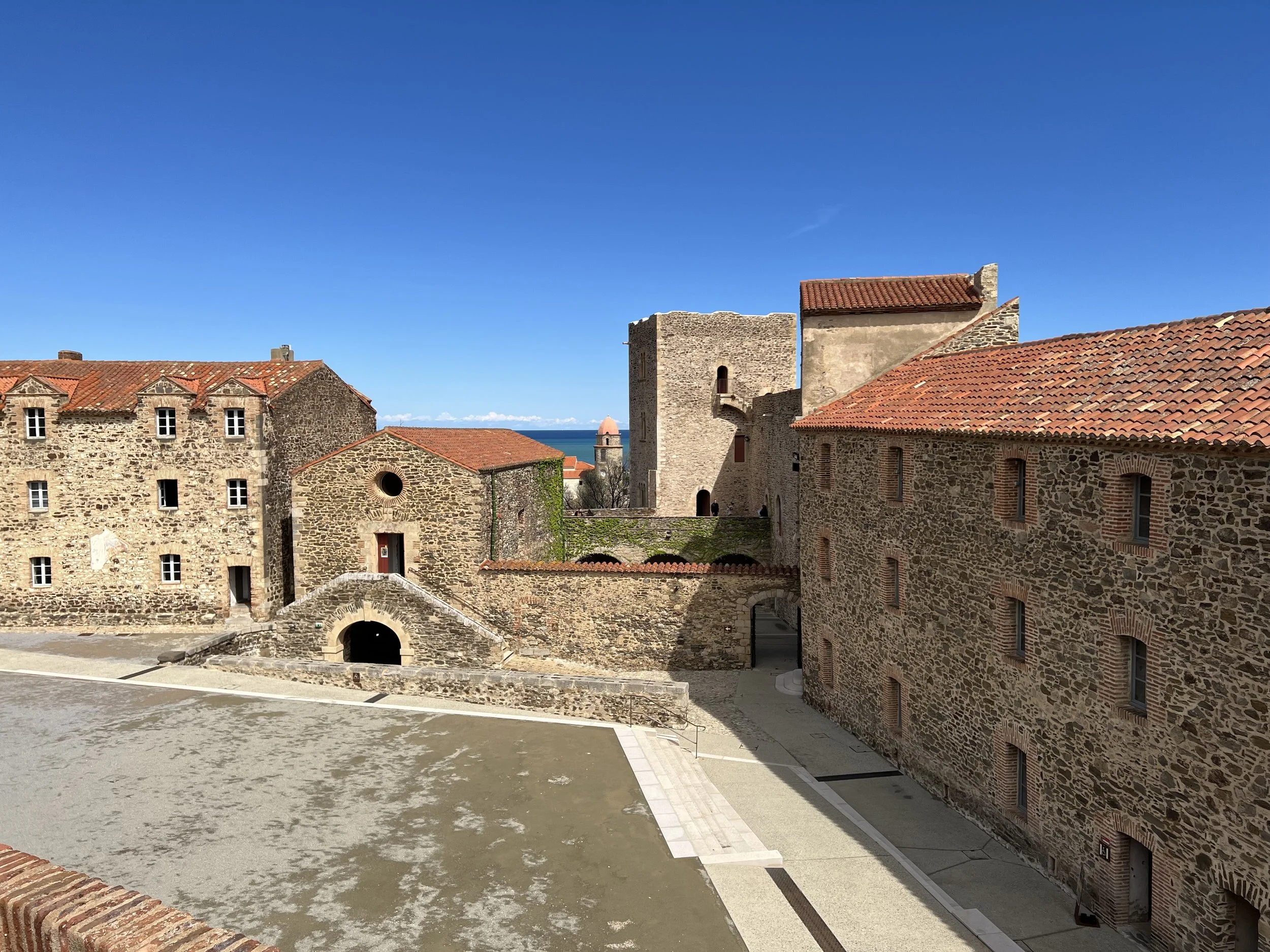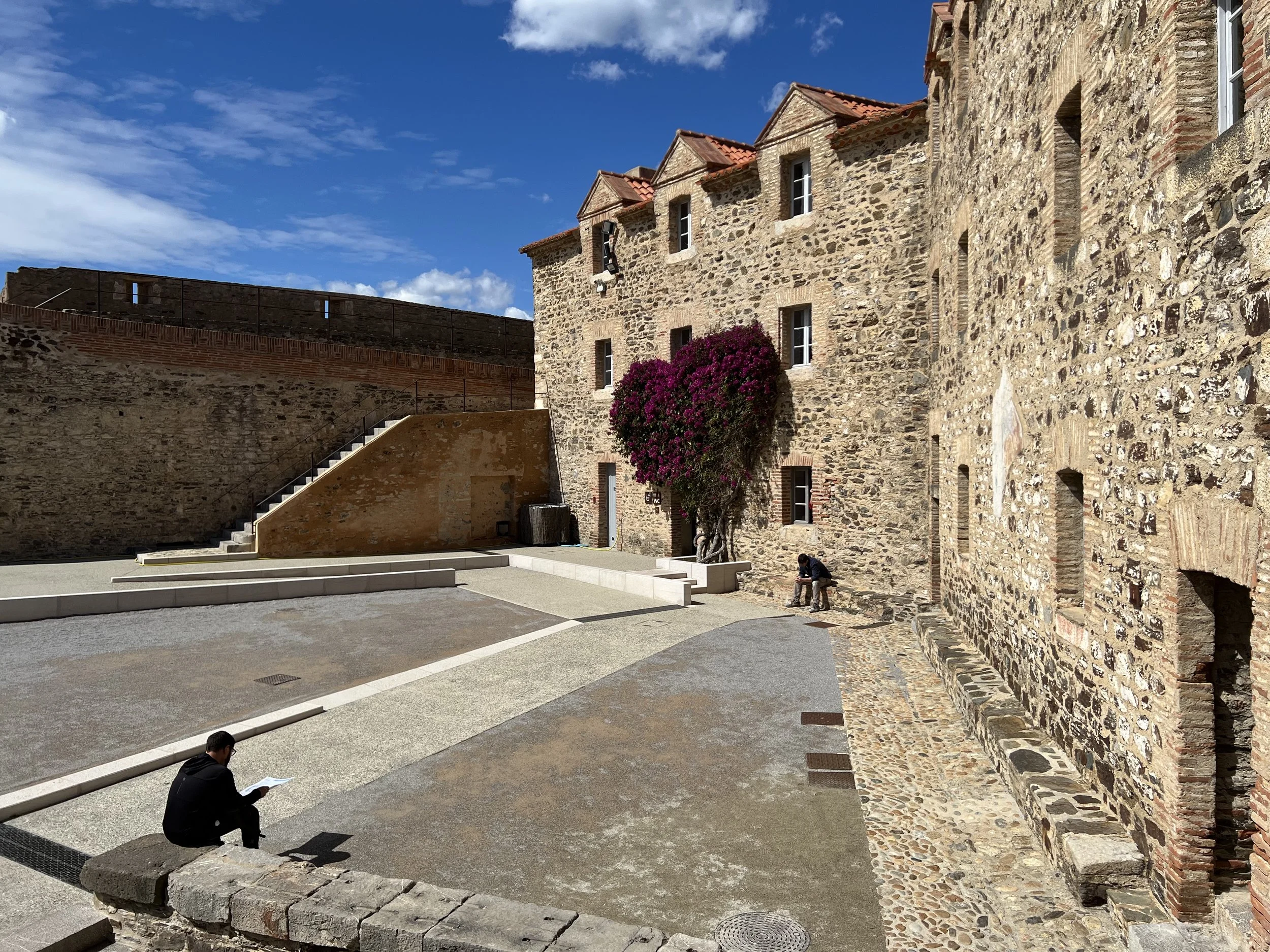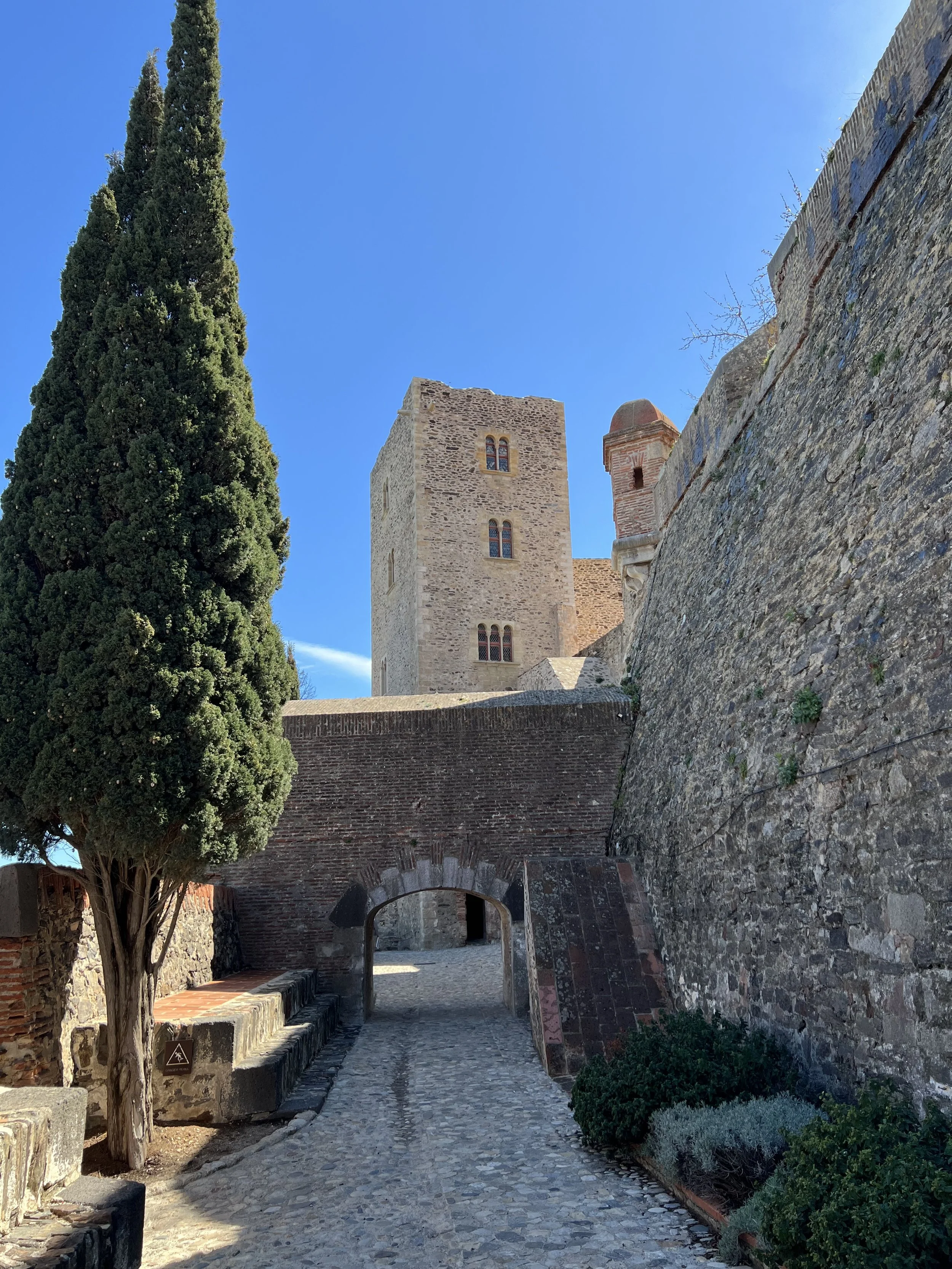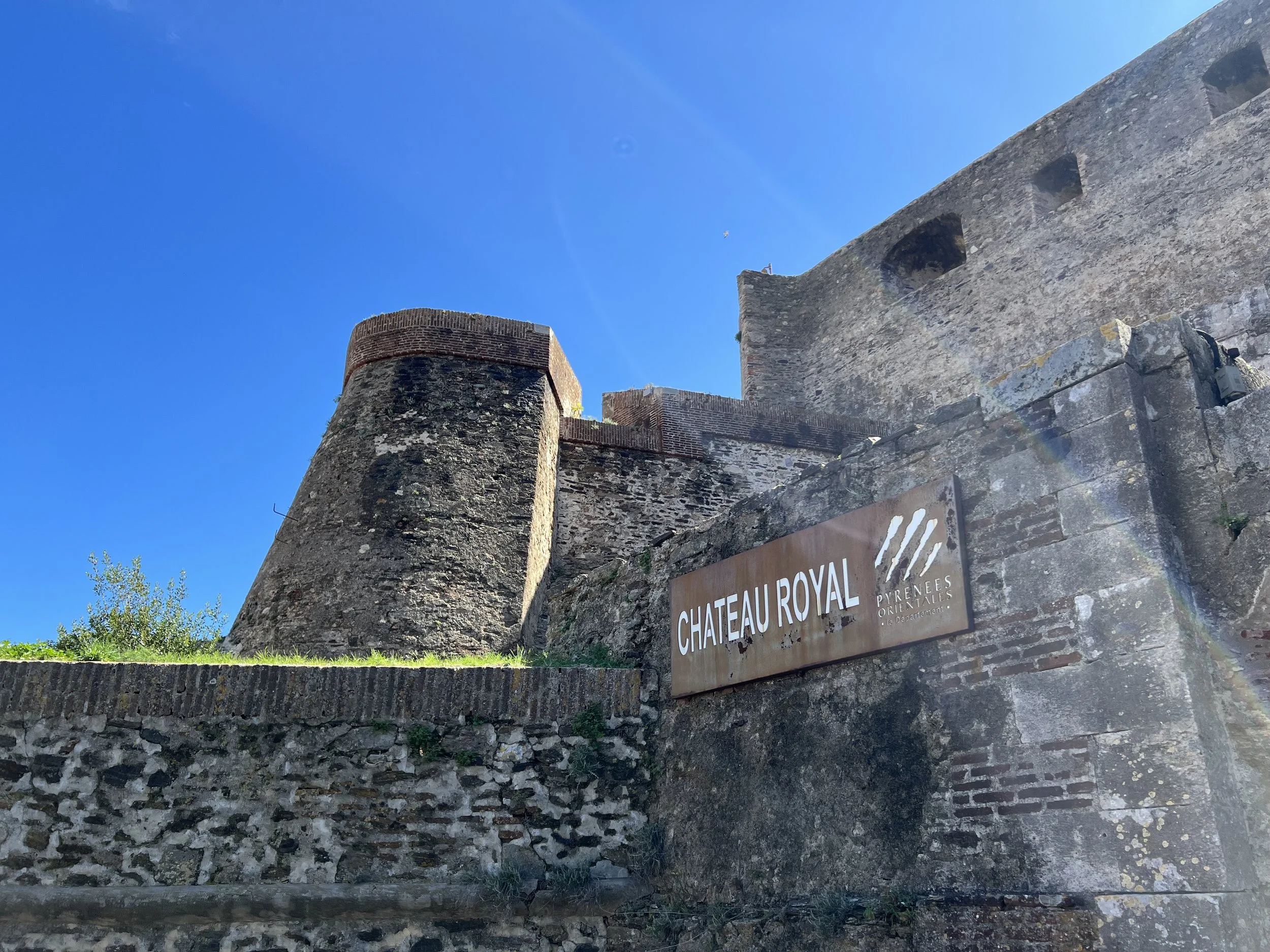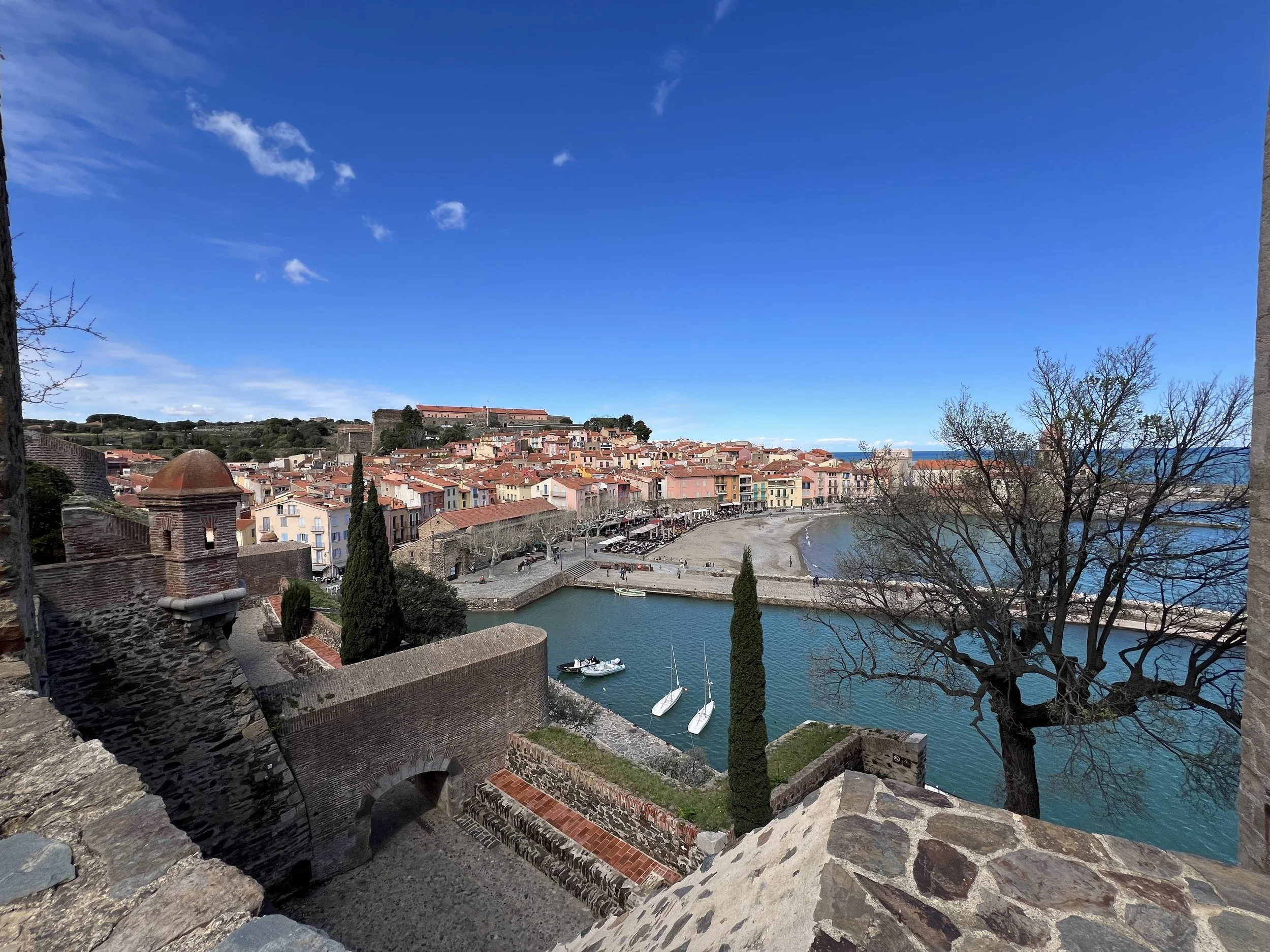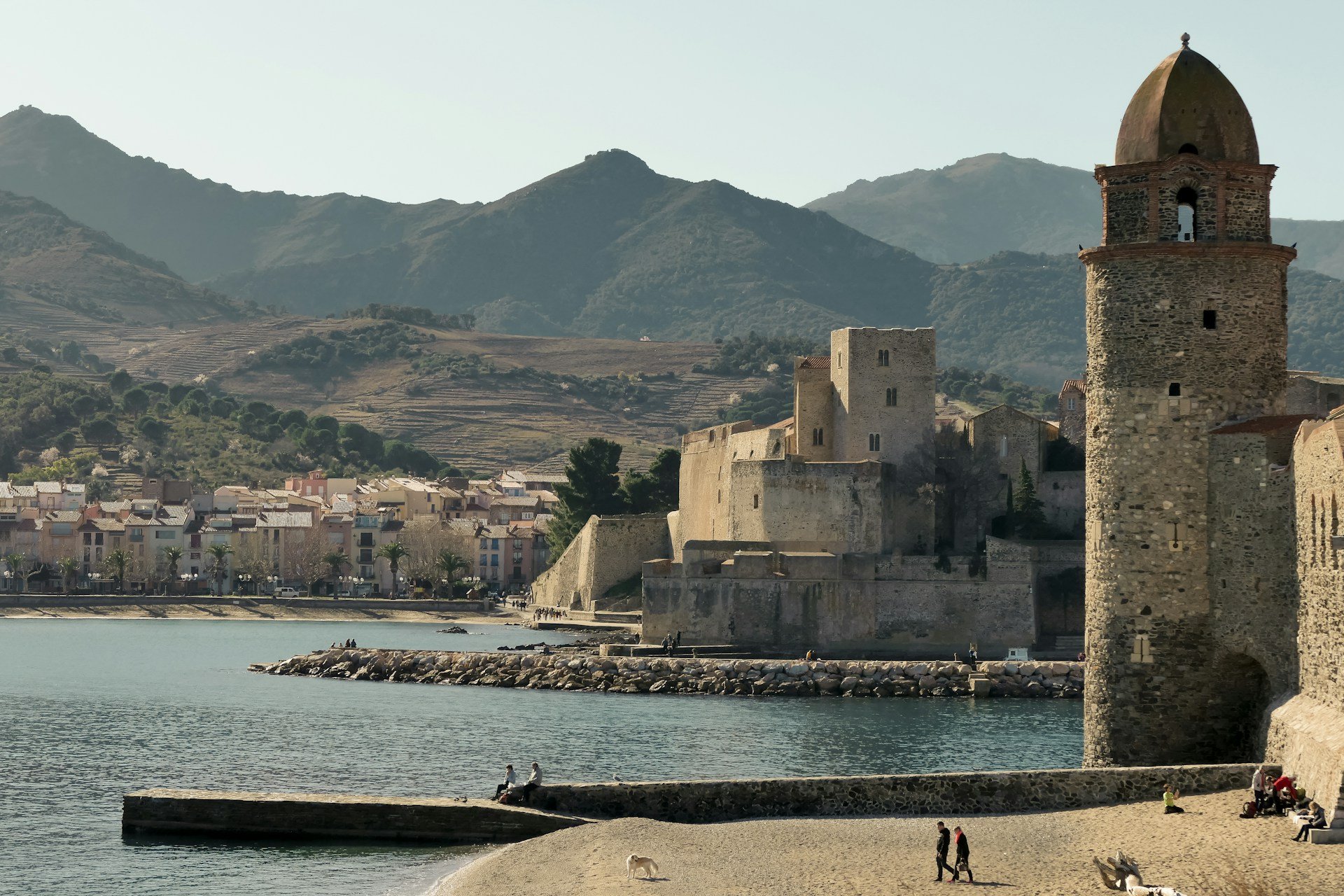
Collioure Castle
Château Royal de Collioure
The Roman Castrum at Collioure, 120 BC
Château Royal has for millenia been – in various forms – been at least four different castles over the centuries. It was always of one sort of fort or another, but really came of age when the Romans sailed into Collioure in 120 BC. Collioure became the principal port for the Roman’s regional capital of Elne’s, along with Port Vendres – or Portus Veneris as it was called in Latin.
To defend Collioure from Gallic tribes, the Romans built a Castrum on the site of Collioure Castle and this is where the history of Chateaux Royal really begins. However, the Roman’s rule over Collioure was to end in 410 when the Visigoths took it over and the Roman age ended.
Visigoths and Arabs in Collioure, 400 to 900 AD
Indeed, it’s under the Visigoths in 610, that we can mark its first documented mention when King Wamba, a Visigoth ruler, besieged their fortress known as "Castellum Caucolibéri", to quell a rebellion.
Collioure was in flux for a number of centuries in which the Visigoths and Arabs came and went, but we do know that in 981, Lothaire, one of the last Carolingian kings, instructed Guifred, the Count of Roussillon, to enhance the fortress's defences and it is at this period that the Castle really became a base to repel Moorish pirates and to exert control over the region.
Kingdoms of Aragon and Majorca in Collioure – 1100 to 1300 AD
Though Wikipedia, states that, “the Knights Templar built the castle around 1207 and in 1276 it was integrated into the royal castle”, I can’t find any facts that support this from the various books written on the subject. Wikipedia is only as good as its writers and anyone can write a Wikipedia page, so I would question its validity. Certainly, it’s likely that the Templars operated from the Castle though.
What is known is that the existing structure of Collioure Castle, prominent on a rock by the bay dividing the area, was primarily constructed in the latter half of the 13th century and early 14th century, with significant renovations occurring in 1242 and 1272, under the Kings of Aragon.
This is the period when it transformed the castle from a basic military outpost into a formidable fortress with the construction of extensive walls, towers and a gatehouse integrating the castle into the feudal network of defences that spanned across the Kingdom of Aragon and later into the hands of French monarchs.
The castle has an unusual east-west alignment and an oval-shaped southern section, extending from west to east with a series of buildings linked by two large towers. The east houses the main entrance, protected by the second tower and accessible via a drawbridge that once had a tall tower at its location.
The castle's medieval walls are constructed of schist blocks bound with mortar, featuring ornately cut stone at architectural focal points such as corners, gates and windows. Most original plaster has eroded away, leaving the stonework exposed, while wood now plays a significant role in the structure, particularly in floors and ceilings.
Guard pathways along the top of the walls and watchtowers on higher ground allowed for surveillance over the bay and surrounding areas highlighting the castle's strategic importance.
In 1344, Pere IV of Aragon fortified the castle further by constructing a ditch around it after defeating Jaume III of Majorca. This ditch, originally from the 14th century, has been partly filled over time and now features a chapel making it resemble a tunnel.
Collioure Castle had four functions: defence, housing, governance and fear - serving as a strategic coastal stronghold for the Kings of Majorca. The castle, typical of royal residences of the period, was organised around a central courtyard with a keep (donjon) and surrounding living quarters.
Many of the original royal chambers, including a chapel dedicated to Saint Mary Magdalene, have been lost to time, with historical records indicating that the Royals rarely stayed there.
Remnants of the castle's ornate interior decorations survive, showcasing the craftsmanship of the sculptors and painters from that era through elaborate plasterwork and preserved frescoes featuring geometric and floral motifs, reminiscent of high-status areas like the queen's loggia in Perpignan.
Details such as locally styled windows and fireplaces, as well as roofs covered in tiles or waterproofed fabric, reflect the period's aesthetic and functional considerations. Luxurious touches include glasswork, possibly schist or terracotta flooring, and decorative carpets and tapestries.
We can thank King Peter IV of Aragon for establishing a large courtyard known as the parade ground and constructing a massive tower that reshaped the castle's layout into a triangular form, pushing back existing structures including the west tower and the keep.
Collioure Castle Under Ferdinand & Isabella – 16th Century
The castle's transformation into a fortress included the addition of underground ramparts used for defensive positioning. Renovation efforts have revealed medieval rooms and structures under the rampart, connecting the castle to its martial past and showcasing layers of historical modifications that emphasise its role in regional defence and control.
This period brought the advent of artillery, prompting significant modifications to the castle's structure. Indeed, the 'crisis of the iron bullet' necessitated the thickening of walls and the introduction of slanted bastions that could better withstand cannon fire. These changes were implemented under Spanish direction, reflecting the ongoing exchange of control and cultural influences in the region due to its strategic importance.
To control strategic heights around the castle, a second defensive layer was established, transforming the surrounding medieval enclosures into Fort Sainte-Thérèse to the north and Fort Saint-Elme to the south.
These efforts were part of preparations by King Ferdinand II of Aragon's to protect his empire’s eastern flank, which involved commissioning the Italian architect Benedetto da Ravenna, to strengthen Perpignan by building the famous Salses Fortress.
However, the French siege of 1642 exposed critical vulnerabilities, since the castle and town of Collioure could be easily dominated from the elevated position of Fort Sainte-Thérèse, where French artillery was strategically positioned.
Louis XIV, the 1659 Treaty of Pyrenees, Vaubin & Collioure
Collioure was transformed when Collioure finally became French following the Treaty of the Pyrenees in 1659, which handed Collioure and Roussillon to the French following long and bloody wars and skirmishes over many years.
A short potted history on how the Treaty of Pyrenees came about…
Since the outbreak of the Thirty Years' War in 1618, King Louis XIII was concerned about a resurgence of Charles V's empire, so he declared war on Philip IV of Spain in 1635.
This resulted in the French capture of Perpignan in 1642 and a decisive French win at the Battle of the Dunes near Dunkirk in 1658, which solidified French control over northern Catalonia.
The Treaty of the Pyrenees in 1659 brought significant territorial gains for France including Artois, Flanders, half of Lorraine, Roussillon and a part of Cerdagne.
The Treaty also formalised the marriage between Louis XIV and Maria Theresa, daughter of Philip IV, on June 9, 1660, which made these territories semi-autonomous - almost like a foreign province of France with unique Catalan traits and administrative rights.
Nevertheless, the peace was tense and the decision was made by the French in 1668 to enhance the defences of Collioure and Sébastien Le Prestre, Marquis of Vauban, a famed military engineer, led and supervised these major projects.
Vauban redesigned the fortress to incorporate cutting-edge defensive features, such as star-shaped bastions, intricate moats and outworks that extended the castle’s ability to resist and retaliate against sieges. It took around 10 years and culminated in the creation of Mirador Fort and a number of other installations dotted around the town.
It’s not an understatement to say that Vauban’s constructions changed the face of the town with the expansion of the half-moon defences across the whole town, which required a major demolition of over fifty houses and the existing Parish Church.
On Vauban's suggestion, and following his subsequent visits, a new church was constructed beside the old canal, solidifying Collioure's status as a fortified outpost, as plans to relocate most of its population to Port-Vendres were ultimately abandoned (thank goodness!).
The new church was of course, L’Église Notre-Dame-des-Anges, or Our Lady of the Angels Church, which was built between 1684 and 1691, and turned the old beacon tower into its bell tower, which still stands to this day.
The church was designed by French architect, Pierre Aloau, in a classic 17th-century Roussillon plan, featuring a single nave and side chapels and housing various historical treasures, including 15th and 16th-century paintings and reliquaries.
The Spanish Raid Collioure, 1793
Taking advantage of the French Revolution’s power vacuum, Spain made a surprise attack on Collioure in 1793. So, from April 1793 to July 1795, embroiled in a conflict with Spain, France initially lost ground, but regained Collioure in December 1793 following a counterattack.
In Spring 1794, the French captured the strategically important Fort Saint-Elme and this victory forever weakened the Spanish defences in the region and ended the Spanish threat once and for all.
Chateaux Royale Collioure in Modern Times
Over the 19th century, attention shifted to reinforcing coastal defences and developing Port-Vendres as a major fishing hub, whilst a dynamite factory was established in the Bay of Paulilles in 1870 by Alfred Nobel.
The artistic allure of Collioure was cemented in the late 19th and early 20th centuries by artists like Paul Signac, Henri Matisse and André Derain, whose works featured Collioure Castle, contributed to the town's recognition in the art world.
During the Spanish Civil War, from 1936 onwards, Collioure saw an influx of refugees and, for a time, the Castle was sadly used to intern Spanish refugees, as was Argeles-sur-Mer and Rivesaltes.
The Second World War exacerbated the situation with the internment of a thousand communists in 1939 at Collioure Castle and subsequent deportations of "undesirables" and refugees to Algeria, which ceased with the liberation of North Africa in 1943. Indeed, Nazi fortifications during WWII marked the last significant military action involving the Castle.
In 1952, the Castle and Citadel were transferred to the Pyrénées-Orientales department marking a new chapter in its history as a preserved historical site and later a major Museum, which you can visit.

